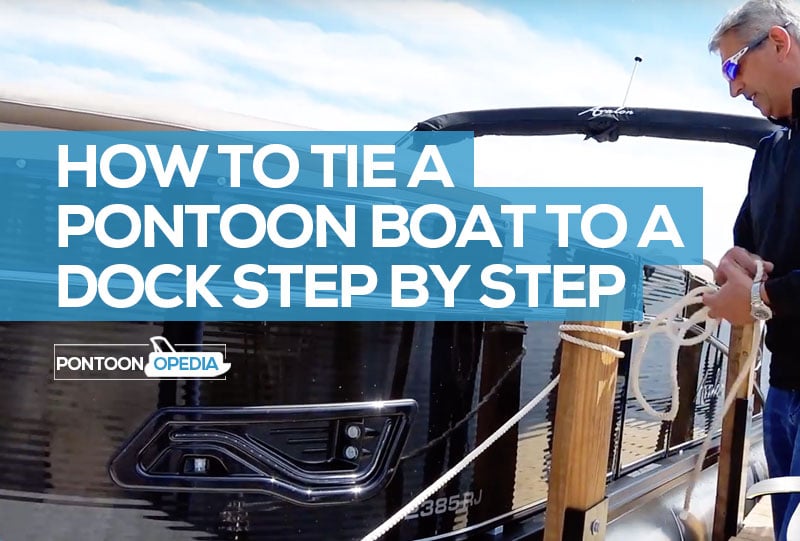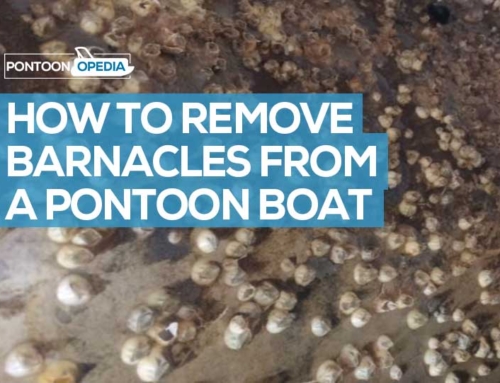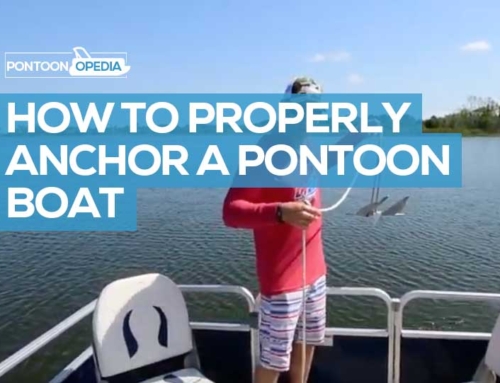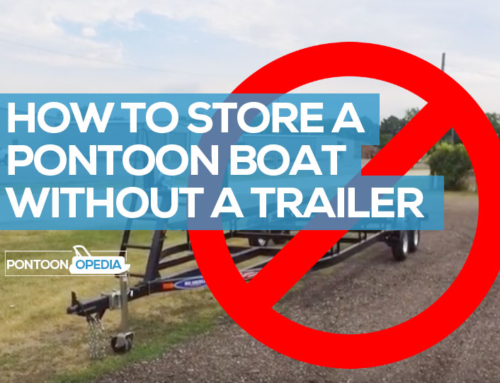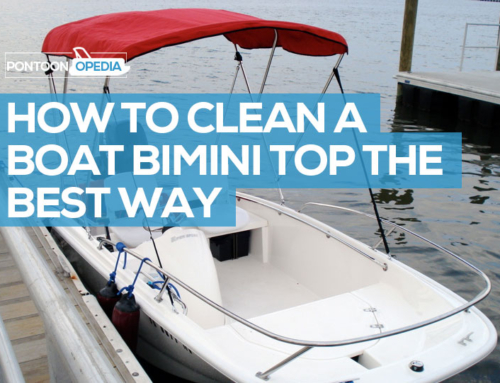If you are new to pontooning, or perhaps have a rental scheduled, one of your questions could be “how do I tie a pontoon boat to the dock” and what the best way to do so is. In this very short guide, I will take you through the best method so you have the confidence in knowing your boat will be safe and secure.
Below you can see a step by step method, with some images courtesy of the WikiHow website. Don’t worry that it’s not a pontoon boat shown in the illustrations, the method is exactly the same for boats of this size.
How to secure a pontoon boat to a dock
So firstly, let me put your mind at ease. Pontoon boats are really simple to drive, and if you can drive a car, I’d bet my bottom dollar that you will adapt to pontooning really quickly.
However, docking is probably the hardest element to master because it requires care, attention, and when you’re new, a lot of positioning tweaks – if you recall how your reverse parking was when you first started driving, you will know exactly what I mean!
But with practice and patience, after a few times of securing and tying your pontoon boat to the dock, it will become second nature.
Step 1: Check the cleats and bumpers
One rookie mistake I often see, is people coming into dock without hanging their bumpers over the side. You want the bumpers there to protect your pontoon boat from getting damaged on the dock side.
Also check that the pontoon boat has cleats on the side. Cleats are small t-shaped metal brackets which dock lines are attached to. You can see an illustration of what they look like below.

This is what a cleat looks like and will be an essential part in securing your pontoon boat to the dock
Step 2: Hang your bumpers to face the dock edge
I am assuming they are already hanging, but if not hang your bumpers (also known as fenders) on the side of the pontoon that will be facing the dock side.
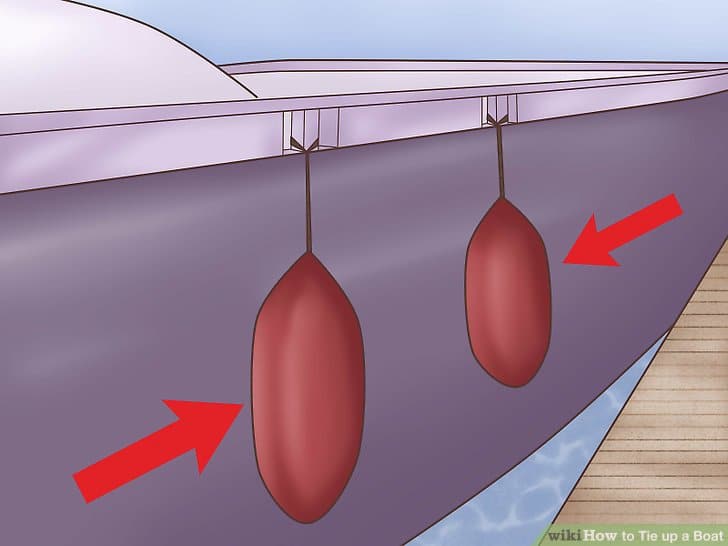
Don’t forget the bumpers or fenders as they will protect your pontoon boat from getting damaged.
Step 3: Check for pilings or cleats on the dock
The place which you are going to dock into will have pilings, cleats, or a combination of the two. Pilings are thick pieces of timber that are attached to the side of the dock.
Some pilings will have metal cleats attached to them, or in the absence of pilings, you will simply see cleats fixed to the dock itself.
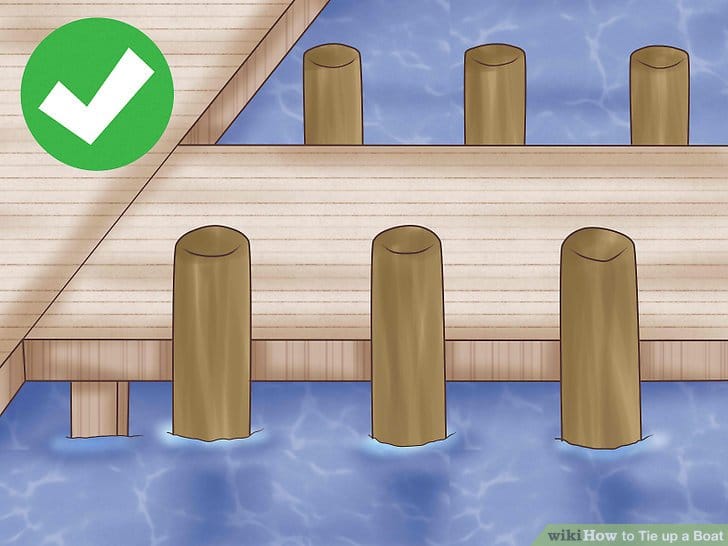
This is what pilings look like and will be where you will tie the pontoon boat up.
Step 4: Approach the dock slowly at a 45-degree angle
You can now make your approach into dock (click here for more parking advice).
Make sure that you come in at a 45-degree angle to the dock edge, but taking things really slow.
Step 5: Switch into neutral as the 10 feet mark and turn parallel
At the point you are around 10 feet away from the dock edge, flip the engine into the neutral position.
You will find that your pontoon boat will now start to coast towards the dock edge due to your previous momentum.
Turn the pontoon boat into a parallel position to the dock edge, and you will coast into position.
The key to getting this right here is to place the engine into reverse just as you get to the dock, as this will stop the forward momentum and position you better.
Step 6: Step onto the dock with the aft and forward rope lines
You can now step out onto the dock, but make sure you have the dock lines in hand and they are already tied to the cleats on the pontoon boat.
If preferable, have a passenger do this part for you, so you can keep control of the boat from the helm in case you need to re-position.
Step 7: Tie the forward dock line to a cleat
You can now take the forward dock line, making sure that it extends at a 45-degree angle from your pontoon boat before tying to the dock.
The best way to tie a pontoon boat to a dock cleat is by using a cleat hitch. You can see what they look like in the illustration below.
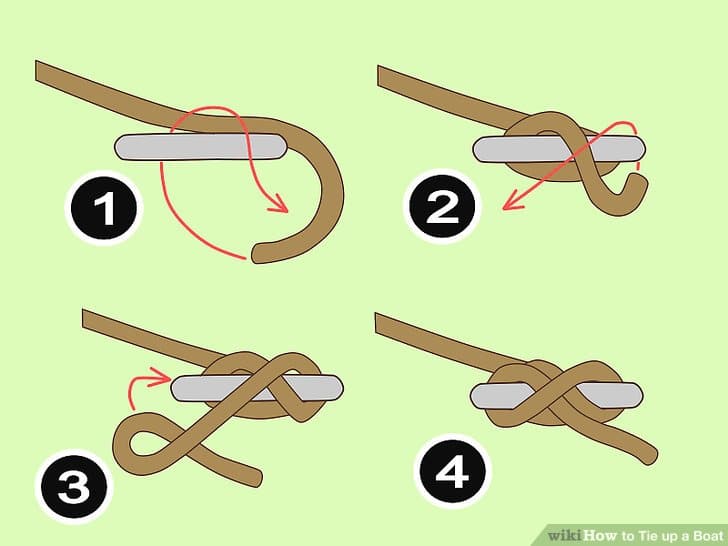
This shows how to tie a cleat not onto a metal hitch when docking your pontoon boat.
Cleat hitches are the most commonly used tie for securing pontoon boats (or any boat for that matter).
Extend the forward rope to a cleat on the dock. This rope should extend out 45 degrees in front of the boat. You can see a video lower down the page on how to tie a cleat, but in simple terms it goes like this:
- Wrap the dock line once around the base of a metal cleat.
- Next loop the line around he left end of the metal cleat.
- Then around the right end of the metal cleat.
- Then pull it around the left end again.
- Lastly tuck the end of the line under a loop pull the knot tight.
Step 8: Repeat this process with the aft dock line
You can now move to the rear of the boat from the dock side and repeat the securing and tying process using the aft dock line.
Step 9: Optionally use a middle dock line
If the weather is rough, you might want to add an extra dock line from the middle of the pontoon boat. This will help secure it better to the dock.
This is what the end result should look like:

This is how the dock lines should be tied once you are in position.
Best way to tie a pontoon boat to the dock using a cleat hitch
Here’s a video I found on YouTube which shows you how to tie cleat hitch. It’s essential viewing if you want to know how best to tie a pontoon boat to a dock, slip, or marina.
What if there aren’t any cleats but just pilings?
In some cases, you might have to dock where there are no metal cleats in place.
Don’t panic.
You can still use the same step by step method I outlined above, but instead use hitch knots on the timber pilings instead.
The Tahoe Pontoon Boat Youtube channel published a very good video showing you how to do this. It’s part 3 in a series, so once you watched this below, go see parts 1 and 2 as well as it’s some of the best tutorial content I have ever seen with regards to docking a pontoon.
The last word…
I hope this has helped you in understanding how best to tie a pontoon boat to a dock – it will also work for a boat slip too (boat slip definition).
The key here is remember that you probably won’t get it right the first time. But as long as you are slow and have your fenders in place, it’s unlikely that you will cause any damage to your pontoon boat, the dock, or other boats nearby.
It will take a few goes, but I promise you that after a few times of doing it, you will have it off to a tee!

